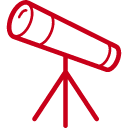Automatic Self-Correcting Quantum Systems (No. 0228)
|
|
<< Back to all technologies |
Summary
Quantum information is very fragile and can be destroyed by virtually any noise that affects the quantum computer or quantum device. One of the key discoveries that showed the world that quantum computers could possibly be built was the invention of quantum error correction techniques. The goal is to build a fault tolerant quantum computer. There has been a lot of research into quantum error correction, designing new codes, or devising methods to remove noise from quantum bits using complex control pulse sequences, etc. However, these techniques are quite complicated and do not work well if one attempts to apply them to a collection of inhomogeneous qubits. To solve this problem, OIST researchers have developed a new scheme in which, when the quantum system suffers some noise, the quantum system can act on itself to correct itself against this noise. This new scheme, which we call ASCQS (automatic self-correcting quantum systems), requires no measurement, nor resetting nor classical feedforward to operate.
Applications
- Quantum error correction
Advantages
- Automatic self-correction
- Simple and robust scheme
- Continuous protection
Technology
More specifically, this ASCQS scheme is very robust and can take an individual dirty qubit (with a short T2 time) and clean it (greatly reduce the dephasing noise from its local environment – and can lengthen T2). It can also operate on an ensemble of dirty qubits to remove dephasing noise from each qubit in the ensemble. The ASCQS scheme has the additional capability to homogenize a collection of dirty (or clean) qubits, where each of these qubits possesses slightly different energies. The ASCQS scheme uses a simple continuous bi-chromatic drive without any complicated pulses, additional hardware or individual tuning or addressing of any of the qubits.
Media Coverage and Presentations
CONTACT FOR MORE INFORMATION
![]() Graham Garner
Graham Garner
Technology Licensing Section
![]() tls@oist.jp
tls@oist.jp
![]() +81(0)98-966-8937
+81(0)98-966-8937






